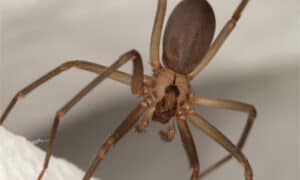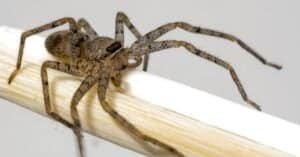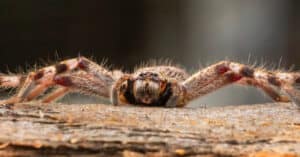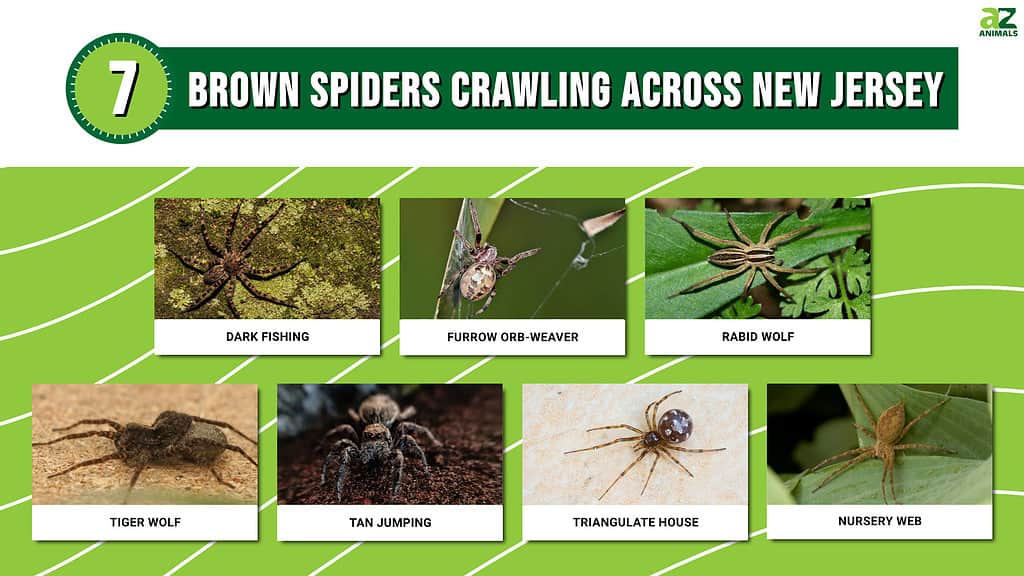
Spiders are very common in New Jersey and interestingly, many of the species are brown and easy to confuse for one another. Not all brown spiders are solid brown either — some have eye-catching and unique patterns. Although it’s easy to feel spooked by these eight-legged arachnids, spiders are very beneficial. Are you ready to learn more about 7 brown spiders in New Jersey? Follow along!
Dark Fishing
Dark fishing spiders aren’t the most common spiders in New Jersey, but you might still spot one or two on your next visit. They have brown and black mottled bodies with some white markings. Females are about two times larger than males. This large spider is often found by the water but sometimes lives in drier wooded areas or underneath rocks and logs. Dark fishing spiders run quickly and pounce on their prey. They are fast and mainly consume insects. Dark fishing spiders are found throughout the United States and Canada. Although they bite, their bites are rarely worse than a bee sting.
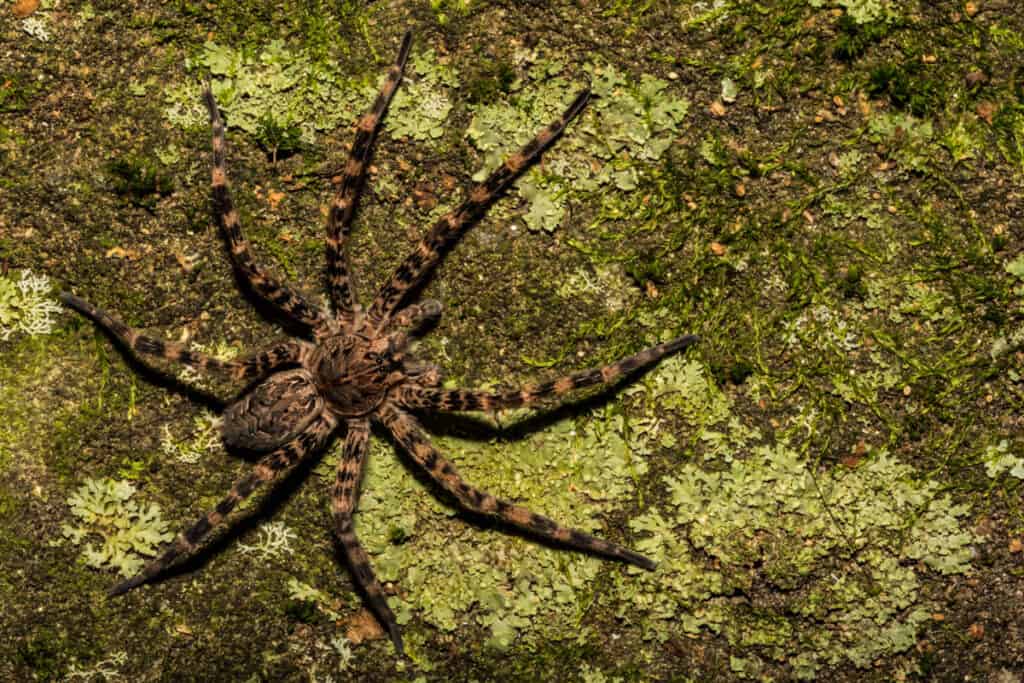
Dark fishing spiders are large spiders found in New Jersey. They are fast runners and strike their predators quickly.
©iStock.com/JasonOndreicka
Furrow Orb-Weaver
Another common brown spider in New Jersey is the furrow orb-weaver spider. This tiny spider is typically less than a centimeter long. Females, however, can grow up to 1.4 cm or 14 mm. They are easy to identify because furrow orb-weavers have unique markings. They range in color and can be different shades of black, brown, red, and grey. In New Jersey, you can find these small spiders in moist areas, near grass, or in low shrubbery. Interestingly, furrow orb-weaver spiders hide during the day and come out at night. Like other spider species, males die after mating and are eaten by females.
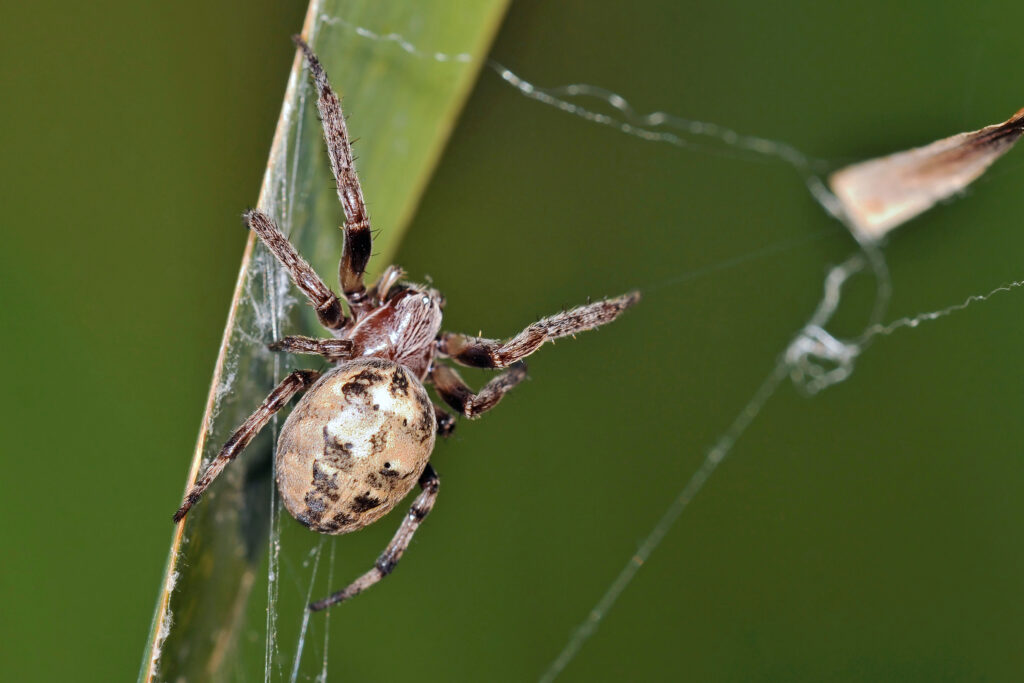
Furrow orb-weaver spiders are tiny, typically measuring less than a centimeter long.
©ASakoulis/Shutterstock.com
Rabid Wolf
The rabid wolf spider is one of the most common brown spiders in New Jersey. They are native to North America and you can find them as far as Maine and Florida. Rabid wolf spiders are brown and yellow. They have two dark stripes cephalothorax and another stripe of the same color on their abdomen. These spiders are small, females are about 1 inch long, while males are half the size. Rabid wolf spiders live in wooded areas, but they aren’t picky about where they call home. Some live in garbage, while others near ponds. Interestingly, during mating, males make noise with their legs and “dance” to capture the attention of female spiders. These spiders aren’t afraid to bite humans when provoked or scared, but their bites aren’t dangerous.
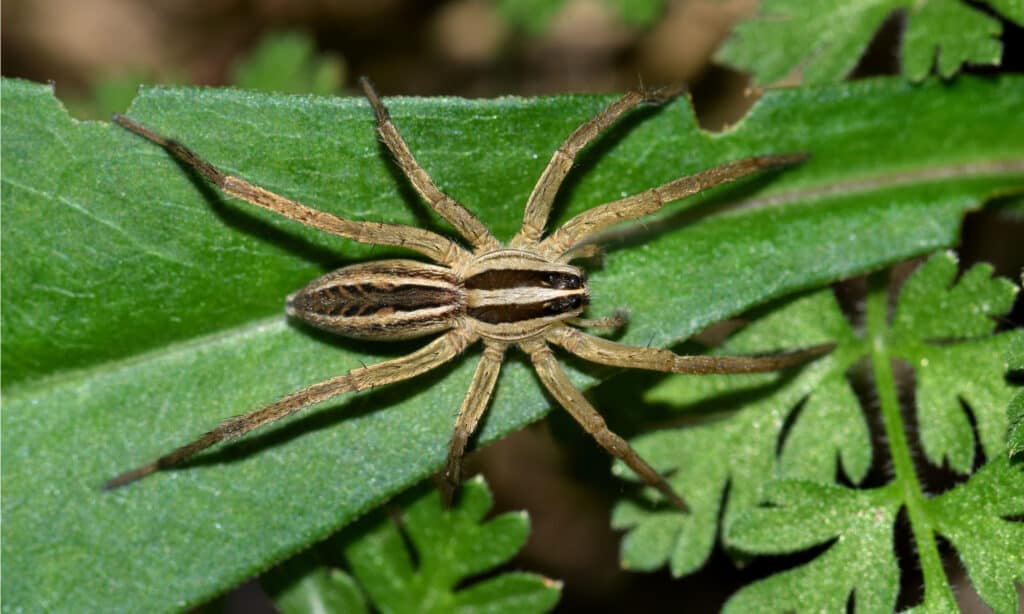
Rabid wolf spiders “dance” during mating season to find a partner.
©Brett Hondow/Shutterstock.com
Tiger Wolf
Tiger wolf spiders are also found throughout the state and are sometimes confused with other wolf spider species. They are mainly common in the eastern half of the United States but can be found as far as Mexico. Most tiger wolf spiders are brown and yellow. They also have distinct black spots on the undersides of their abdomens. These spiders are small, typically growing up to 0.67 inches. They are most active at night and live independently unless mating. Tiger wolf spiders aren’t picky hunters and eat a wide range of insects including beetles, flies, crickets, and cockroaches.
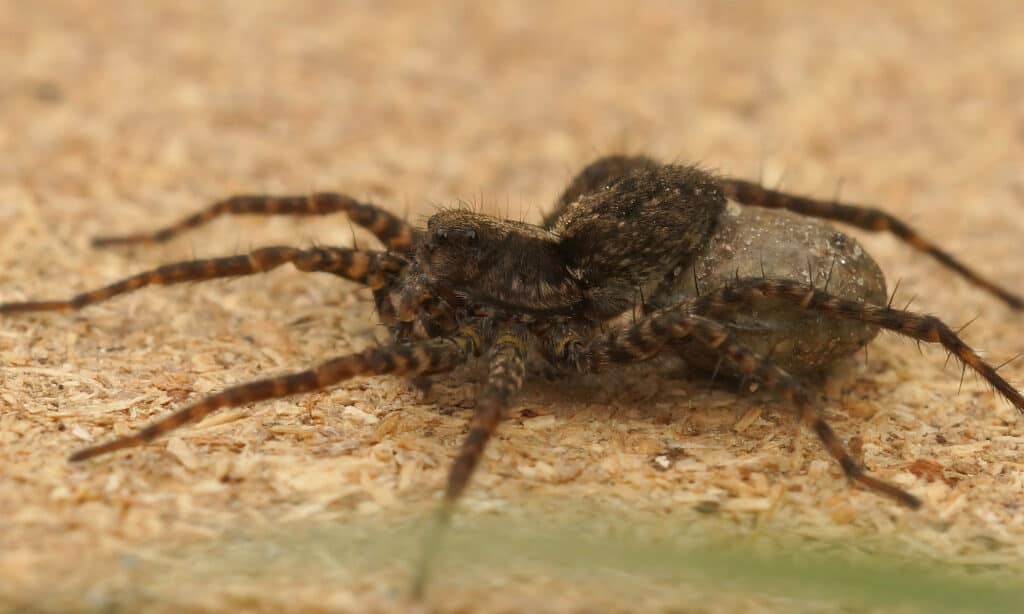
On average, tiger wolf spiders are 0.67 inches long.
©HWall/Shutterstock.com
Tan Jumping
Tan jumping spiders are easy to distinguish from other brown spider species. They are tiny spiders, barely the size of a coin, with gigantic eyes. Tan jumping spiders are great hiders. They are native to North and Central America. These tiny spiders have compact bodies and mainly hide in vertical places like walls, fences, and bark. Although they rarely bite, they will attack when threatened or accidentally grabbed or squeezed.
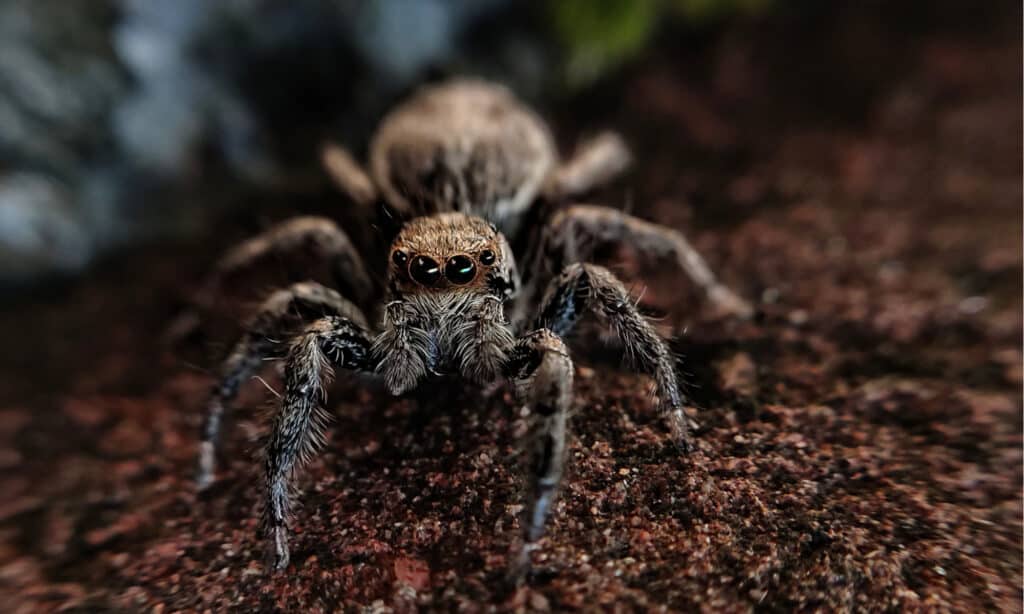
Tan jumping spiders are found in New Jersey and mainly hide in vertical spaces.
©SwastikEs/Shutterstock.com
Triangulate House
The triangulate house spider, also known as the triangulate cobweb spider, is a small spider usually less than half an inch long. It’s a very common spider with a triangle-shaped pattern on the dorsal side of its abdomen. They are brown and orange, with white or creamy markings. These small spiders eat insects and other more dangerous spiders. Some of their common prey include ticks, roaches, fire ants, and pill bugs. Triangulate house spiders have poor eyesight and rely on their webs to trap their prey. These house spiders are believed to be native to Eurasia but have been introduced to North America and New Zealand.
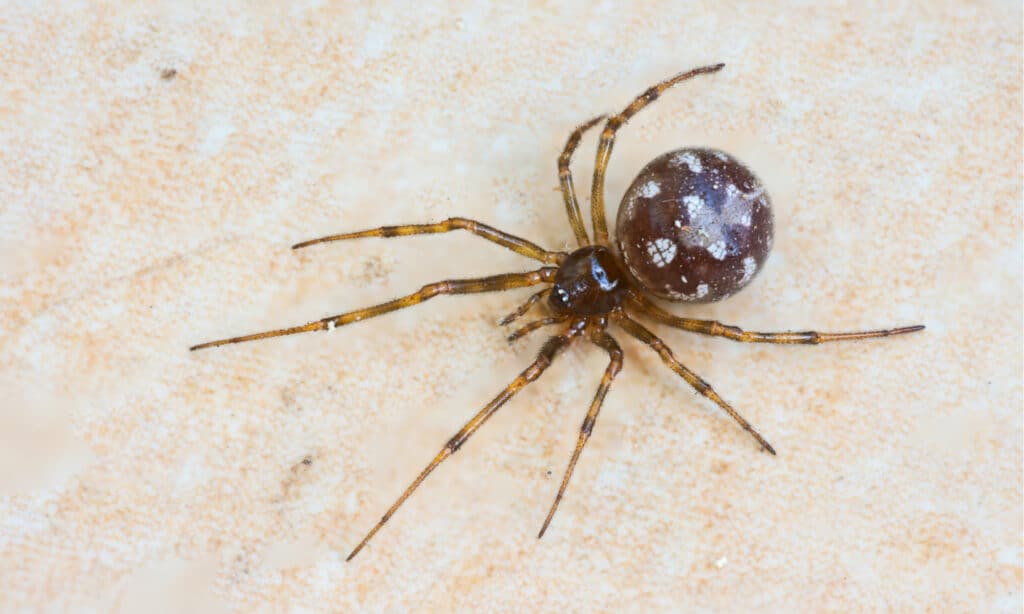
Triangulate house spiders are very common in New Jersey and mainly live in houses.
©Timelynx/Shutterstock.com
Nursery Web
Another common brown spider in New Jersey is the nursery web spider. They are easy to spot and distinguish but are sometimes confused for wolf spiders. However, nursery web spiders have eight eyes about the same size. Female nursery web spiders carry their egg sacs in their jaws. Until they molt, mother nursery web spiders protect them. Nursery web spiders are different shades of brown and yellow. They mainly live in tall grass and shrubs. Sometimes they live in houses and they are great jumpers, leaping up to 5 to 6 inches. Although female nursery spiders eat the males after mating, some males present gifts to lower the risk.
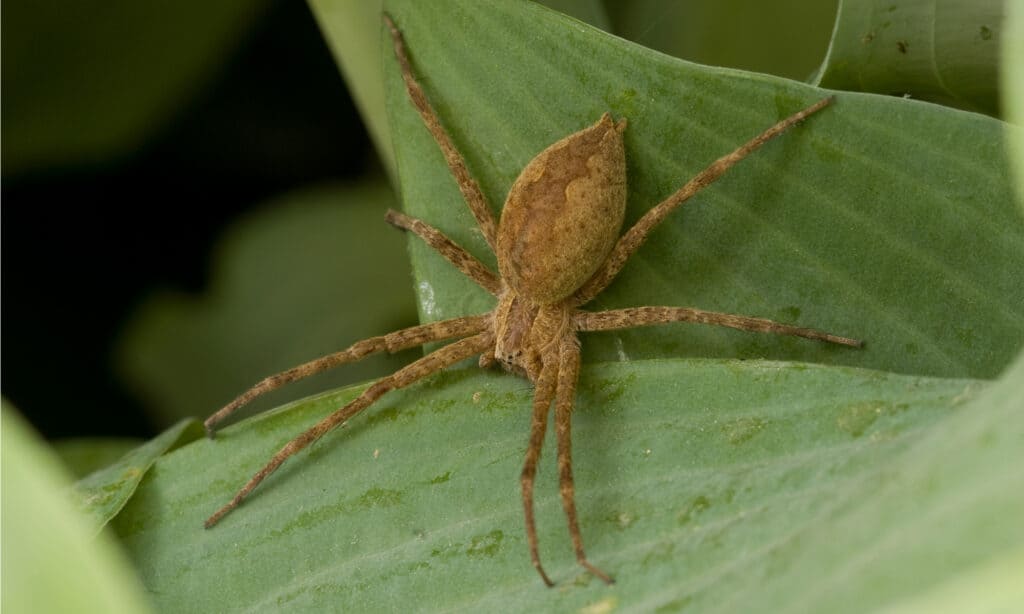
You can find nursery web spiders in tall grass or inside of homes.
©SDeming/Shutterstock.com
Summary Of 7 Brown Spiders In New Jersey
Here’s a recap of the 7 brown spiders present in New Jersey that we took a look at:
| Number | Spider |
|---|---|
| 1 | Dark Fishing |
| 2 | Furrow Orb-Weaver |
| 3 | Rabid Wolf |
| 4 | Tiger Wolf |
| 5 | Tan Jumping |
| 6 | Triangulate House |
| 7 | Nursery Web |
The photo featured at the top of this post is © iStock.com/CathyKeifer
Thank you for reading! Have some feedback for us? Contact the AZ Animals editorial team.



